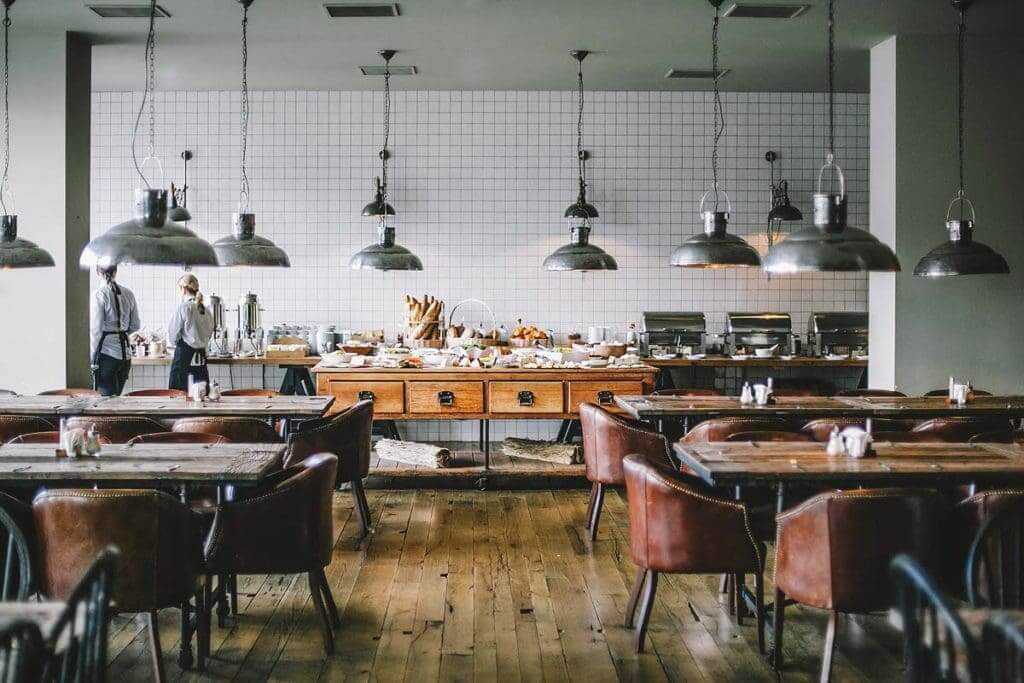Written by Jody Pennette, Founder & CEO of cb5 hospitality consultants
Exclusively for BLLA
Jody Pennette is a member of the #BoutiqueStrong Council
created by BLLA (Boutique Lifestyle Leaders Association) and StayBoutique™
Take this article’s one question survey!
For a successful change to take hold in the full-service restaurant industry as we attempt to grapple with our new reality, we might have to do more than just change the furniture layout…we need to change the customer mindset. Our guests are typically seeking much more than nourishment from visiting restaurants as dining rooms have become the social sandbox of modern lifestyle.

The Challenges
1. New social distance restrictions reduce dining room capacity to less than half.
2. The overhead cost of operating a restaurant are mostly static as rent, utilities, insurance, etc. don’t typically bend despite the conditions.
3. Staff payroll costs are mostly driven by the expense of fixed labor both in management and the kitchen crew. The front house service staff which can be reduced with the premise of take out service was paid mostly from the guests in the form of tips.
4. Delivery sounds like a good idea however the costs of third-party services can range up to 30% of the sale which renders this practical only when used as secondary or incremental sales and not a primary revenue source.
5. Bar revenue was always a good profit center but the alchemy that drives bar sales is often created by the convivial spirit and energy that comes from a crowded room which won’t exist for quite a while within new layout requirements.
Creating a relevant dining room today with the social distancing elements in place would basically deliver a rather dysfunctional financial model on top of an already fragile margin which most operators wrestled with even in the good old days. Static operating costs with sales stifled by 50% is almost a certain recipe for failure. Even if the precarious balance of all these elements was all stacked up just right…we aren’t sure the guest will even show up.
We feed emotions as well as bellies in full-service dining and the compelling reasons that draw an audience is what is unfortunately being eliminated with the current campaign. We will miss the sense of energy and verve that comes from a bustling dining room or a crowded bar. This visceral experience fuels our passion for socializing in restaurants but when the required restrictions are set in place, dining out might be left with the cache’ and sex appeal of a high school cafeteria.

Feeding the Soul…Tribal Style
While dining out, we mostly enter the room initially enjoying the full sweep of energy and design but very soon settle our attention on to our table and the people and food within our range. We enjoy feeling the room vibrate from the other guests, but the eventual focus is more socially intimate.
There is an ideal party size in our industry of 4-6 guests per table. This is the number where enough are seated to maintain solid conversation flow, order menu collectively, by bottles of wine, try new dishes and enjoy a very robust social time away from home. The surrounding room vibration of dishes clattering and people cackling adds to the rhythm and all seems right.
Imagine if we establish within our close family and friends, dining circles of 4-6 who share enough closeness to be familiar and candid about health conditions. Many are living amongst this size collection already and since the current isolation realm will likely expand slowly to at least this range, it can be a good way to address socializing in public without feeling so alone.
Restaurants can rearrange their seating to use tables that only seat 4-6 guests and whether it be sumptuous booths or just large tables created by placing two-tops together…the aisle spaces won’t create such a cavernous effect but rather a pleasant design can take shape with the larger format program. The dining rooms could be laid out to still provide a six foot distance between tables but when all the seating is groups (4-6) they won’t have the sparsity of single tables and the vast emptiness that would bring which it a huge energy vacuum.
The excitement of building your dining circles can be fun and depending on your situation, you might have several “gastro gangs”. The ” foodies”, the Sunday Chinese fix… the BBQ crew etc. Sports bars might adapt by providing the equivalent version in box seats or luxury booths. Banquette or booth seating that houses the 4-6 size are ideal but not essential. Restaurant can enjoy utilizing advance reservations so they can prepare the right amount of product and staff accordingly, similar to the high profit banquet business which takes the guess work out.

The Fix
1.Reduced dining room capacity: This program allows the dining room to have both extra aisle space for safety and still cluster the seating, so the number of lost seats is mitigated.
2. Fixed operating costs: The costs will remain the same, but in this model the diminished dining room would produce a fuller revenue. This size group typically spends more with sharing and trying new dishes as well as an inclination to order bottles of wine and taste dessert.
3. Heavy Payroll: The cost of payroll also is not increased materially with adding front house service staff as they are salespeople and mostly compensated through customer gratuities.
4. Delivery as profit center: When delivery through a third-party carrier is built into the economic model as incremental sales, it can then yield a profit as the staff and overhead are already paid for with eth in house volume.
5. Addressing bar revenue: Whereas the small group clusters can work in a bar, the real mojo that drives a bar audience is the energy of people so in this situation the bar revenue will likely be increased mostly with cocktails and bottles being service at the group dining tables. People tend to order more alcohol /beverage when in a size setting such as this.

Notes on the Guide to the New Paradigm
What this campaign will provide is an exciting new frontier in dining and stimulate awakened interest while providing fun and fulfillment for the guests, income for the staff and profits for the owners. The flexibility also allows operators to expand and contract effortlessly as required without making a huge investment in changing design or production. We were never meant to just provide a meal. So, it is essential we fulfill the need for excitement and fulfillment on all levels while we find our way into a new dimension of social dining.
